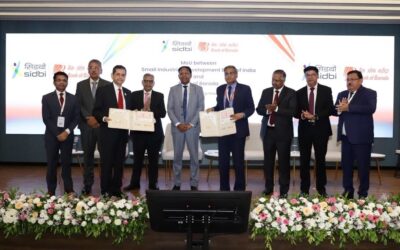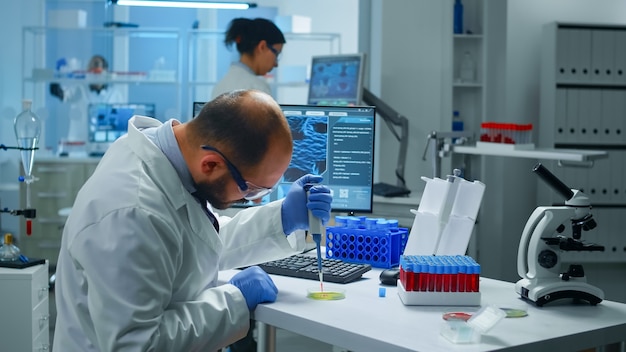Small Pharma, Big Impact: How Energy Efficient Practices Are Driving Change in Pharma SMEs

The transition towards energy efficiency and renewable energy adoption represents a critical frontier in the sustainability journey of small and medium enterprises (SMEs) in the Indian pharmaceutical sector. As energy costs rise and environmental regulations become more stringent, SMEs are increasingly recognizing the importance of optimizing their energy consumption and exploring cleaner energy alternatives.
Energy efficiency initiatives in pharmaceutical SMEs typically begin with comprehensive energy audits to identify areas of high consumption and potential savings. These audits often reveal opportunities for immediate improvements through simple measures such as upgrading to LED lighting, optimizing HVAC systems, and improving insulation in manufacturing facilities. While these initial steps may seem modest, they can lead to significant cumulative energy savings over time.
More advanced energy efficiency measures in pharmaceutical manufacturing involve the optimization of process equipment. For instance, the installation of variable frequency drives on motors, pumps, and compressors can substantially reduce energy consumption by allowing these devices to operate at optimal speeds based on demand. Similarly, heat recovery systems can capture and repurpose waste heat from manufacturing processes, improving overall energy efficiency.
The adoption of energy management systems (EMS) is gaining traction among pharmaceutical SMEs. These systems provide real-time monitoring and control of energy consumption across different operations, enabling more informed decision-making and rapid response to energy inefficiencies. For SMEs with limited resources, cloud-based EMS solutions offer a cost-effective way to implement sophisticated energy management practices without significant upfront investment in infrastructure.
Renewable energy adoption is becoming an increasingly viable option for pharmaceutical SMEs, driven by falling technology costs and supportive government policies. Solar photovoltaic systems, in particular, are gaining popularity due to their scalability and the abundant solar resources in many parts of India. Rooftop solar installations allow SMEs to generate clean electricity on-site, reducing reliance on grid power and providing a hedge against rising electricity costs.
Some SMEs are exploring innovative financing models to overcome the initial capital barriers to renewable energy adoption. Power Purchase Agreements (PPAs), where a third party installs and maintains the renewable energy system while the SME agrees to purchase the generated electricity at a predetermined rate, are becoming more common. These arrangements allow SMEs to benefit from clean energy without significant upfront investments.
Biomass energy is another renewable option being explored by pharmaceutical SMEs, particularly those located in areas with access to agricultural waste. Biomass boilers can provide a sustainable alternative to fossil fuel-based systems for generating process heat, aligning with both energy efficiency and waste management goals.
Energy storage technologies are evolving rapidly, offering new possibilities for SMEs to maximize the benefits of renewable energy systems. Battery storage solutions allow SMEs to store excess energy generated during peak production times for use during periods of low generation or high demand, enhancing the reliability and cost-effectiveness of renewable energy systems.
The concept of microgrids is gaining attention in the pharmaceutical sector, offering SMEs the potential for greater energy independence and resilience. By combining on-site renewable generation, energy storage, and smart distribution systems, microgrids can provide reliable power supply even during grid outages, a critical consideration for pharmaceutical manufacturing processes that require uninterrupted power.
While the transition to energy-efficient practices and renewable energy sources requires initial investment, many SMEs are finding that the long-term benefits outweigh the costs. Reduced energy bills, improved operational reliability, and enhanced brand reputation as an environmentally responsible company are among the key advantages driving this transition.
Government initiatives play a crucial role in accelerating energy efficiency and renewable energy adoption among pharmaceutical SMEs. Schemes such as the Perform, Achieve and Trade (PAT) mechanism, which provides incentives for energy efficiency improvements, and various solar energy subsidies are making it more feasible for SMEs to invest in these technologies.
Collaborative approaches within the industry can also facilitate energy transitions for SMEs. Group purchasing agreements for renewable energy equipment or shared investments in larger-scale renewable projects can help SMEs overcome financial and technical barriers to adoption.
As the pharmaceutical industry continues to evolve, energy efficiency and renewable energy adoption will likely become standard practices rather than exceptions. SMEs that proactively embrace these changes will not only contribute to environmental sustainability but also position themselves for long-term competitiveness in an increasingly energy-conscious market.
The journey towards energy efficiency and renewable energy adoption presents both challenges and opportunities for pharmaceutical SMEs. By strategically investing in these areas, SMEs can reduce their environmental footprint, enhance operational efficiency, and build resilience against future energy challenges, ultimately contributing to their long-term sustainability and success in the global pharmaceutical landscape.










